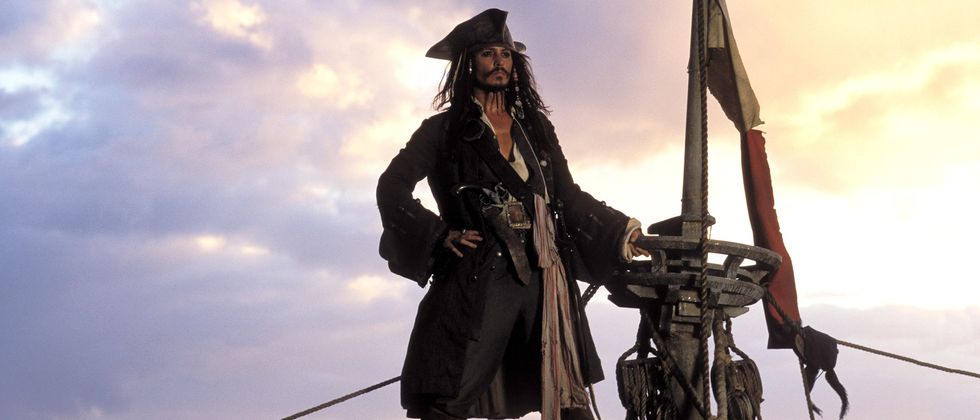The Insta360 GO Is Basically a Super Portable '20-Gram Steadicam'
Tech Specs

Insta360 is likely on the hunt for a new name as they have come out with a new "flat" camera, the GO, which only shoots flat footage. And the company isn't jumping into the crowded action cam market with nothing new to offer; they've taken the tech they developed to build their class-leading units like the Titan and built the world's smallest stabilized camera,
Nicknamed the "20-gram Steadicam" (it's actually even lighter than that at only 18.3 grams), the GO has some cool features other than its FlowState Stabilization tech. It can shoot 100fps bursts, HD video (2720x2720@25fps), Slow Mo, Timelapse, and Hyperlapse, and can be mounted just about anywhere.
- 18.3 gram weight
- 8GB of on-board storage
- Available with iPhone or Android Connections
- IPX4 water-resistant
- 49.4 x 21.4 x 14.85 mm
- Standard, Interval Shooting, Timelapse, Hyperlapse, Slow Motion video modes
- Bitrate: Standard: 40Mbps,, Interval Shooting: 2720@25fps 40Mbps, Timelapse: 6x 40Mbps, Hyperlapse: 40Mbps, Slow Motion: 1600x900p100 40Mbps
- Charge Time: GO: approx. 20min, Charger Case: approx. 1hr
- .Mp4 files exported via app, 1080@25fps, Timelapse, Hyperlapse 1080@30fps Slow Motion: 1600x900@100fps (Captured) for an ourput of 1600x900@30fps
The image quality is surprisingly good for something so small. Obviously, this is largely due to all the R&D going into smartphone cameras, but the physical Insta360 device is much, much smaller than a smartphone.
It's also nice to have it as a separate device; every time I've tried to get a "smartphone shot" on set, the realities of navigating shooting with a device that is also being used for texting, shot previz with Artemis, and more is apparently complicated. Here you get the perks of a tiny camera in a dedicated unit.
While this is clearly a consumer targeted device, we think there are a few things here that are relevant to the independent filmmaker. First off, one of the most fascinating features here is the stabilized Hyperlapse function. This is of course technology we have seen in phones for a few years now, but putting it in a dedicated unit that you can literally just walk around with and get cool shots, no stabilizer needed, is pretty amazing.
In addition, having more, affordable, small cameras around for establishing timelapse style footage is never a bad thing. To shoot weddings 20 years ago, we used to bring along an extra Super8 camera just to shoot a day-to-night timelapse of a location. I could easily see a scenario shooting narrative or documentary work where you brought along a bag of these rigged up to a few places to get various timelapse shots of the location for establishing purposes while you are busy shooting inside.
They aren't all going to be great shots, that's the gamble of these things, but just having those types of shots as options in the edit is useful. Of course, even on a stage show, you could set up a few timelapse shots to have more interesting content to push out to your social channels to promote your production.
This isn't the kind of thing that filmmakers are ever going to shoot an entire feature on (someone might do a whole hyperlapse short, maybe, if they get really creative and have very patient actors willing to perform very slowly). But it is the kind of thing that's good to keep on your radar as a filmmaker and think about how you might integrate it into your current productions to find little moments that can open up your edit.
Hands-On with the Insta360 GO
We were able to spend a few days playing with it, and one nice feature is that it inspires a lot of "oh hey, I could do this kind of shot or that kind of shot that I couldn't before" kind of brainstorming based on its size and stabilization.
Our first thought was immediately to see if we couldn't rig it up into a boxing glove and use it for punching someone in a boxing scene. It's small enough that, buried properly in the glove, it wouldn't hurt to be hit with it, and it'll give you a shot that you literally aren't getting any other way. It might only play for 12 frames in the edit, but it's 12 frames that could add an impact. That kind of thing is what these tech innovations are good for, helping us expand our brains and inspire some creativity.
The Insta360 GO retails at $199 and is shipping now.
If you want to learn more, head on over to the company's website.
How would you use the Insta360 GO on a project? Do you think its features are enough to compete in the action cam market? Let us know down in the comments.


















